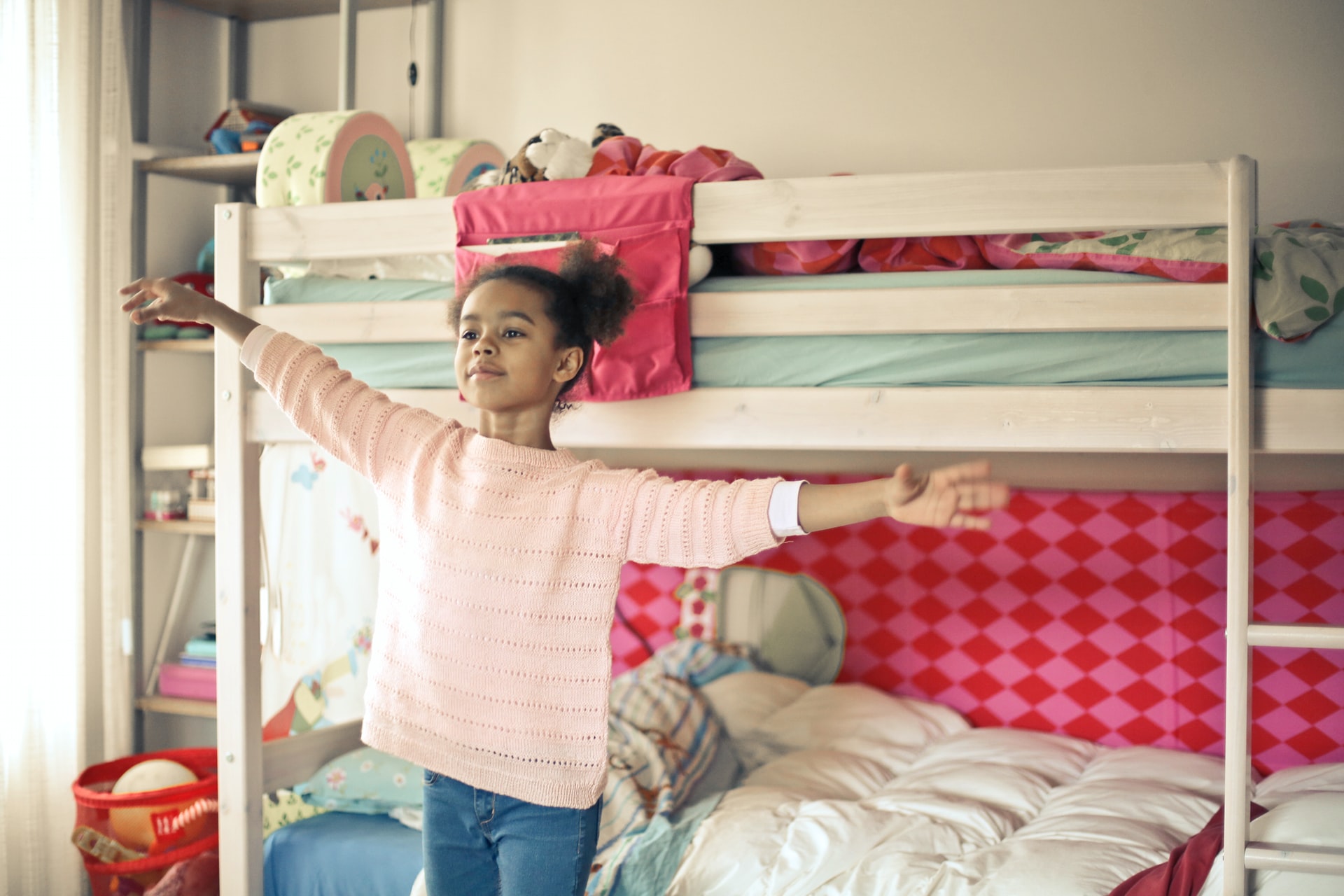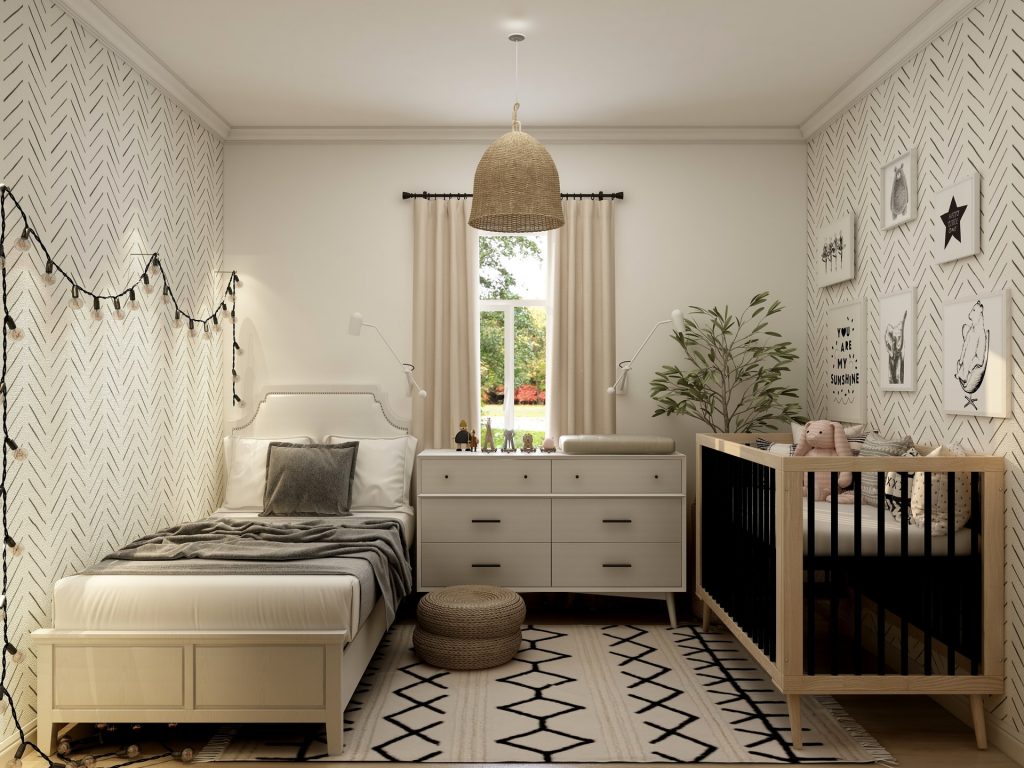The Cons and Pros Of Kids Sharing A Room, & How To Do It Work

Having two siblings share a bedroom is often regarded negatively. Sure, it’s ideal for each child to have their own area, but that’s not always practical – and that’s just OK. In fact, it may be more than adequate. There are several advantages to children sharing a room, ranging from establishing strong relationships between siblings to assisting them in learning things they might not have learned otherwise.
If you’re worried about having two of your children share a bedroom, consider these expert-backed advantages.
Table of Contents
The Cons and Pros Of Kids Sharing A Room
The Cons of Sharing a Bedrooms
Some of the most popular reasons given by parents for their children having separate bedrooms are:
- The personalities of siblings collide.
- When children have their own area, they sleep better.
- Children require their own space.
- They have a youngster that needs to be alone due to health or emotional issues.
A fight between an African American sister and brother. A adolescent girl shows her tongue to a younger male. Closeup photo of two small toddlers resting in bed. A bad mood, a negative feeling, upbringing, and the notion of family
When boys and girls reach the age where modesty is vital, they should have separate bedrooms. Initially, they may be able to meet their demand for privacy by changing in separate places or at different times. However, by the time they enter adolescence, they must be respected and provided with solitude and space.
Sharing a room with youngsters of the same gender is acceptable as long as both children feel comfortable doing it. Sharing a room may establish a link that will last a lifetime if your children are close and feel safe sharing their space and things, thus a children’s bunk bed may be the right alternative. However, one or both of the children will normally express a need for their own place at some point. Toy sharing can be problematic, especially if there is a significant age gap. The elder child could object to their smaller sibling “messing with their possessions.”
The Pros of Sharing a Bedrooms
Siblings might be resistant to moving to their own, separate quarters. If this happens, try one of the following solutions:
- Begin by dividing your home into two zones for your children: one for sleeping and one for playing and other activities.
- If the motive for separate rooms is to change clothing, consider having them change in different rooms or at different times.
Allow one or two evenings every week, or perhaps a full weekend, for a sibling “sleepover” in which they all sleep in the same room.
If you don’t have enough space to divide your children, make a separate location for each child to keep their clothes and toys. Create a “wall” using floor-to-ceiling bookshelves or a curtain to split the area into two distinct sections. When it’s time for your kids to have their own rooms:
- Explain the advantages of having their own area to your children.
- Stress the importance of having varied bedtimes and seclusion.
- Make every effort to ensure that each kid has all they require for education, play, and amusement.
- Make each child’s room unique, reflecting their personalities and hobbies.
How To Do It Work For Sharing a Bedroom
So, how can you make the best of sharing a space while negotiating limits and resolving conflicts?
Time it correctly.
If you have an older child who isn’t adjusting well to a newborn and already feels obligated to share everything—including your love and time—Markham advises delaying. If you’re expecting a third kid and want to combine the elder two, do it before the baby arrives so there’s less animosity over the new addition to the family.
Sharing should not be used to address sleep difficulties.
A roommate or bed companion may be a comfort to a kid who has many nightly wakings, but Edwards believes it is unlikely to alleviate current sleep issues and may create new ones. Children should learn to self-soothe and sleep on their own. “I would never promote room sharing in order to cure sleep difficulties,” Edwards adds. “I’d attempt to address that first, and utilize room sharing as a reward for excellent sleep rather than a remedy for poor sleep.”
Make your own personal areas.
Every child requires seclusion at times, but introverts desire it even more. “A lot of introverted youngsters need this.” “They derive their vitality from being alone,” Markham explains. “And they’re never alone to recharge their batteries if they’re always in the midst of a family and always have a sibling nearby.” Instead of a separate room, you could acquire a bed tent or canopy, or for older children, a huge bookcase in the middle of the room may help divide the area. Designate specific spaces for each child’s stuff, and provide older children with a secure location, such as a box with a lock, to keep their valuables safe from probing small hands.
Increase the volume.
White noise is excellent for calming children and filtering out distracting sounds, however my younger daughter dislikes it. She frequently speaks to herself before going to sleep, which irritates my elder daughter. In such circumstances, Markham recommends playing soothing music or an audio tale so that children may focus on anything other than their own voices to self-soothe. That is exactly what we have been doing, and it is working for both daughters.
Purchase bunk beds.
Bunk beds are popular because they not only save space but also visually separate children during sleep, making them less inclined to annoy one another. Simply ensure that the youngster sleeping on the top bunk is at least six years old and that the bed used satisfies current safety regulations. Always use the ladder to climb on and off the top bunk, and only play on the bottom bunk if the lower space has been created by the maker as a play area.

Manage disagreements.
If children do not learn to resolve conflicts while they are young, they will never be able to do so as adults. “Children aren’t born knowing how to do this, so we have to educate them,” Markham explains. While you should avoid taking sides in sibling disputes, she advises that you should assist them in resolving them as soon as they arise. One suggestion is to make a list of rules that you can refer to and enforce. Even if your children can’t read yet, writing things down can help, according to Markham. “We are a family, and we always sort things out,” “No nasty voices or shouting,” and “We always clean up” are some nice ones for the list.
Consider your sleeping schedule.
Do nighttime routines and tales with your children if they are close in age and have comparable sleep demands. Set a time restriction for older children to communicate after they’ve gone to bed. Edwards recommends that bedtimes be separated by at least one hour. That timing may appear to be extra work, but it might be a solution to your bedtime problems. According to Edwards, you may need to let a toddler who still naps throughout the day to remain up later than a school-aged child.
Create a calm zone in the room.
Reserving the area for peaceful activities like as reading and studying is an excellent strategy to avoid squabbles over how the space is utilized. All loud activities, including playdates, should take place in common areas of the house, such as the living room.
For naps, separate them.
It’s difficult to get two kids sharing a room to sleep at the end of a long day, and it’s much more difficult to get them to sleep in the afternoon. If both kids need to sleep and there is ample space, Edwards proposes relocating the elder one to another room or to your own bed (a.k.a. “the big bed”) (if your eldest is old enough to stay in an adult bed safely). It will be simpler for them both to unwind.
Please be patient.
Expect a three to six-week adjustment time to acclimatize to rooming together, and be patient, adds Edwards. “This is common; don’t give up if it doesn’t work immediately away.”
The Best Age Gap Between Children Who Share A Room
It is not always possible to examine the age gap between two children who must share a bedroom, but it is something to consider. Experts usually concur that the closer they are in age, the better. “My main concern is when there is a much smaller child with an older child,” Dr. Stark explains. “Bedtimes varies, and parents may prefer that their older child goes to bed sooner.” Those parents fail to see that the older child requires solitude and space, and they will stay up late completing schoolwork.”
Having an age difference isn’t always a bad thing. Ford believes that kids will figure it out regardless of their age differences.
Is it OK for brothers and sisters to share a room?
Many parents are uncomfortable with their son and daughter sharing a bedroom, yet in many circumstances, it is just OK. “Just because they’re different sexes doesn’t mean they can’t get along,” adds Dr. Stark. “It is determined by their personalities.” Some youngsters simply get it.”
As Dr. Stark points out, the actual issue here is the gender divide and the question of privacy. She suggests that parents assist develop private boundaries as a means to get around this. “One youngster can change in the bathroom, one in the bedroom dressing area,” she says. “Room walls can also aid with this.” It all comes down to talking to your children and evaluating their degree of comfort and how they feel about sharing a room, especially as they become older.
There are further advantages to having a brother and sister share a space. “They can also share toys and dress-up outfits,” Ford explains. “I believe this is fantastic for closing the gender gap.”

Conclusion
When choosing whether your children should share a room, use common sense. Examine how they interact with one another. Talk to them about how they feel about sharing a room on a regular basis. You may make a decision that both you and your children will feel comfortable with if you communicate lovingly and openly with them.
If you’re looking for the right children’s bedroom furniture, check out our wonderful selection of kids beds, mattresses, and children’s storage solutions.


















![Silk & Snow Hybrid Mattress Review Should You Buy It Or Not [2022]](https://www.myspacebeds.com/wp-content/uploads/2022/11/Silk-Snow-Hybrid-Mattress-Review-Should-You-Buy-It-Or-Not-2022-520x293.jpg)


